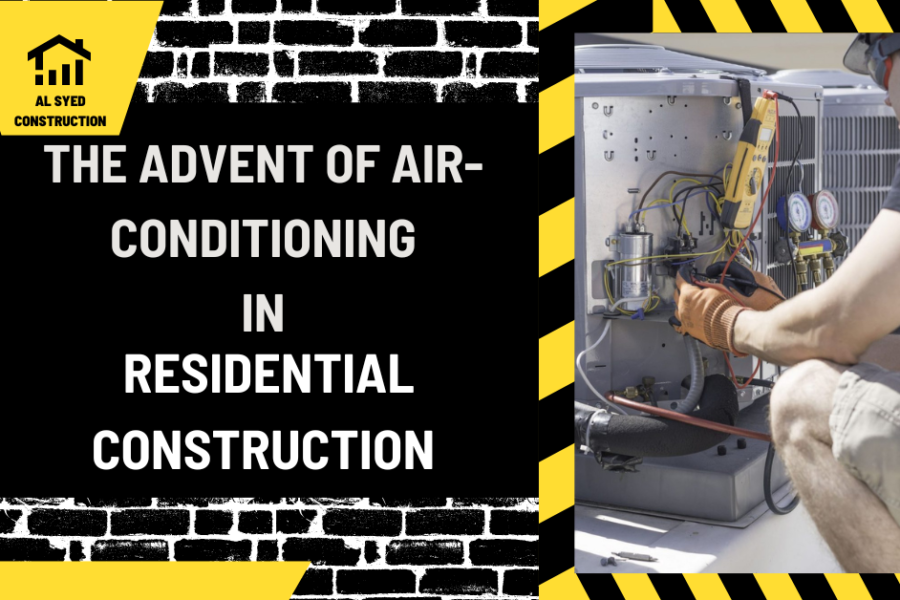A Cool Evolution: The Advent of Air-Conditioning in Residential Construction
Table of Contents
Introduction
The introduction of air-conditioning in residential construction marked a significant turning point in modern living, transforming homes into comfortable havens regardless of the external climate. While the concept of air-conditioning dates back to ancient times, its widespread availability in homes is a relatively recent development. This article explores the decade when air-conditioning first became commonly available in residential construction and its impact on home design and lifestyle.
The Birth of Modern Air-Conditioning
Early Innovations
The concept of air-conditioning has been around for centuries, with ancient civilizations using various methods to cool their living spaces. However, it was not until the 20th century that modern air-conditioning technology was developed. In 1902, Willis Haviland Carrier invented the first electrical air-conditioning unit, marking the birth of modern air-conditioning.
The 1930s: A Pioneering Decade
Air-conditioning first became commonly available in residential construction in the 1930s. Initially, it was a luxury reserved for the wealthy, with installations in mansions and high-end apartments. The introduction of smaller, more affordable units in the late 1930s and early 1940s began to democratize access to air-conditioning for the middle class.
The Post-War Boom and Air-Conditioning
Mass Production and Widespread Adoption
The post-World War II era saw a boom in residential construction and a surge in demand for air-conditioning. Advances in technology and mass production made air-conditioning units more accessible and affordable, leading to their widespread adoption in homes across the United States.
Impact on Home Design
The availability of air-conditioning in residential construction significantly influenced home design. Architects began to incorporate air-conditioning systems into their plans, leading to the development of more sealed and insulated homes. This allowed for greater flexibility in design, as homes no longer needed to rely solely on natural ventilation and shading for cooling.
The Modern Era of Air-Conditioning
Energy Efficiency and Innovation
Today, air-conditioning is a standard feature in residential construction, with ongoing innovations focusing on energy efficiency and environmental sustainability. Modern air-conditioning systems are designed to provide optimal comfort while minimizing energy consumption and reducing the environmental impact.
The Future of Home Cooling
As we look to the future, the evolution of air-conditioning technology continues, with developments in smart systems, renewable energy integration, and advanced materials. These advancements promise to further enhance the comfort and sustainability of residential cooling.
Conclusion
Air-conditioning first became commonly available in residential construction in the 1930s, revolutionizing home comfort and design. From its early days as a luxury for the wealthy to its widespread adoption in the post-war era, air-conditioning has transformed the way we live and build. Today, as we embrace energy-efficient and sustainable technologies, the legacy of air-conditioning continues to shape the future of residential construction, ensuring that homes remain comfortable sanctuaries in an ever-changing climate.




